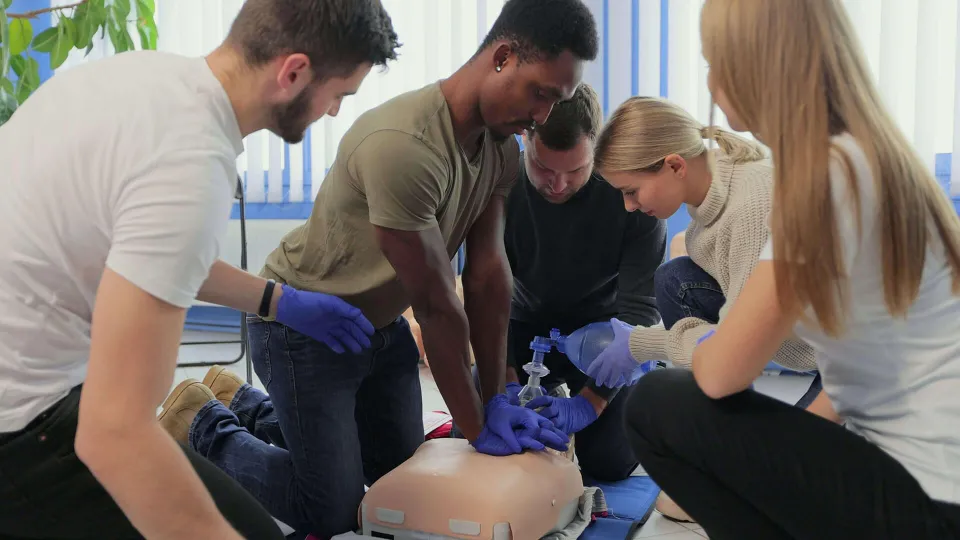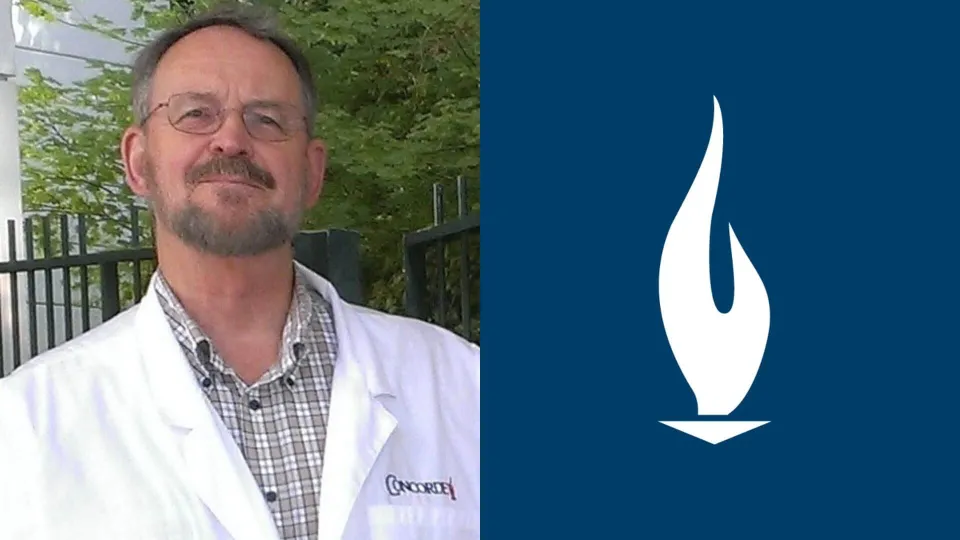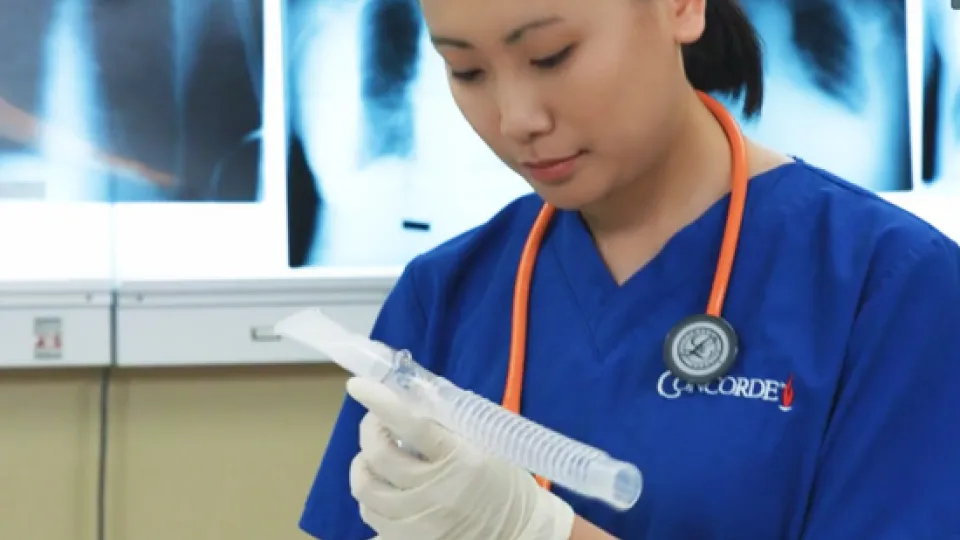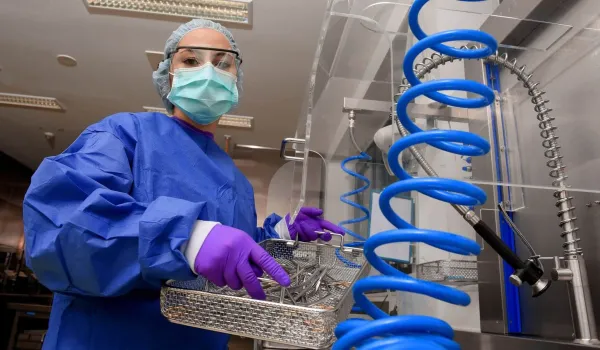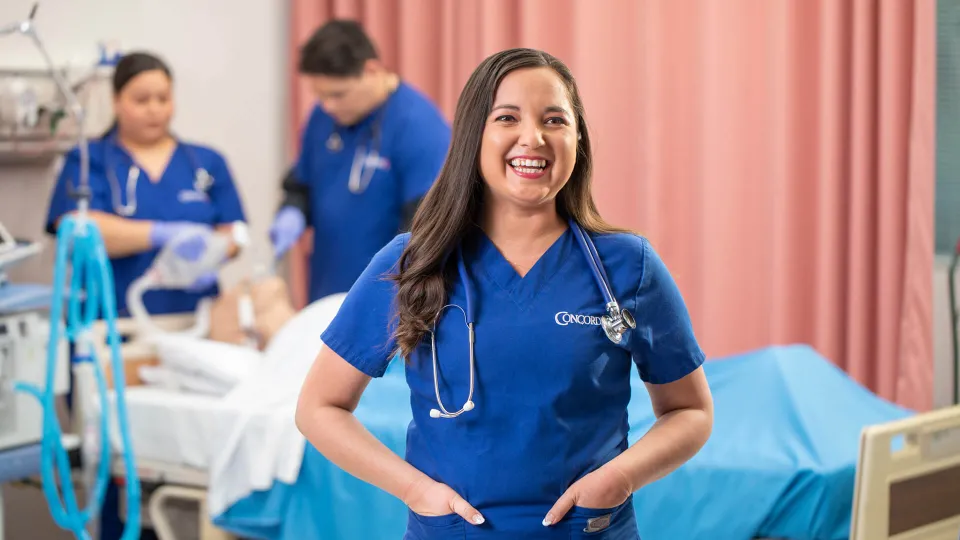
Before you enroll in a Respiratory Therapy training program, it's important to research the requirements and career opportunities this role provides. Whether you're interested in working in a hands-on health care role or advancing your medical career through additional certifications, there are a lot of intricate details involved in becoming a respiratory therapist. This guide explores the day-to-day responsibilities and requirements of RTs so you can map out your professional journey.
What Do Respiratory Therapists Do?
RTs treat patients with breathing difficulties and cardiopulmonary disorders. Their expertise spans all age groups, from premature infants with underdeveloped lungs to elderly adults managing chronic respiratory conditions. They work closely with physicians to evaluate patients and perform diagnostic tests. RTs also help develop personalized treatment plans and administer therapies to improve lung function. This work includes providing oxygen therapy, managing ventilators, and performing pulmonary function tests. These professionals also educate patients on using medications and hormone therapies, such as inhalers or continuous positive airway pressure machines.
In emergency situations, RTs assist in lifesaving interventions to make sure patients receive proper oxygenation. About 82% of RTs work in hospitals. This category includes emergency rooms, intensive care units, and neonatal care settings. Others find opportunities in nursing homes, outpatient clinics, and home health care placements. Some chronic conditions they assist patients in managing include sleep apnea, chronic obstructive pulmonary disease, and asthma. Many RTs work evenings since hospitals run nonstop. They might also put in weekends and holidays.
Respiratory Therapist Education Requirements
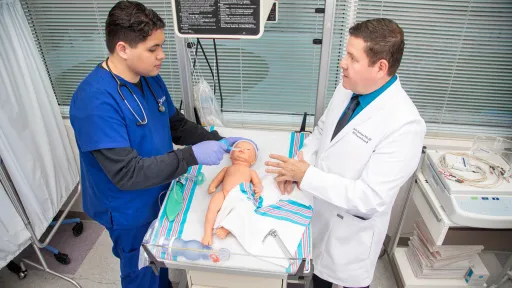
Becoming a respiratory therapist requires formal education and hands-on training to develop the skills needed for patient care. Usually, an associate's degree in respiratory therapy from a Commission on Accreditation for Respiratory Care-accredited institution is the minimum required for admission into this field. However, many employers prefer candidates with bachelor's degrees because they tend to have a deeper understanding of advanced clinical practices and leadership opportunities. To equip students for practical patient care, most programs integrate classroom instruction with clinical experience. Typically, courses cover:
- Anatomy
- Physiology
- Chemistry
- Physics
- Microbiology
- Pharmacology
Students also learn to perform diagnostic tests, operate ventilators, and administer therapeutic treatments throughout their studies. The clinical portion gives students the chance to gain hands-on experience in hospitals and other health care facilities. Some RTs go on to pursue master's degrees in specialized areas such as health care administration or advanced clinical practice. With additional training and certification, pursuing these degrees can provide opportunities for leadership roles and research positions.
Explore Concorde's Respiratory Therapy Associate Degree Program.
Respiratory Therapy Licensure and Certifications
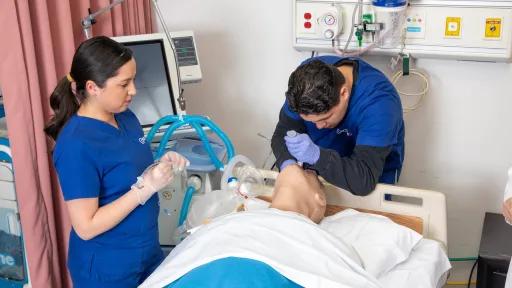
Except for Alaska, all states require respiratory therapists to obtain licensing, but their standards differ. Completing an authorized respiratory therapy curriculum and passing a certification test are part of this process. The National Board for Respiratory Care grants two main credentials:
Certified Respiratory Therapist
The CRT is an entry-level certification that most states require. To earn the CRT credential, you must pass the Respiratory Therapist Multiple-Choice Exam. This test assesses whether you have the fundamental knowledge and skills needed to work in respiratory care. The exam consists of 160 multiple-choice questions and covers three core content areas:
- Patient data evaluation and recommendations
- Initiation and modification of interventions
- Troubleshooting, quality control, and infection control
The TMC exam has two cut scores. The first is called the low cut score. Candidates who achieve this benchmark earn the CRT credential and are eligible for state licensure. The second is the high cut score. If you perform well enough to meet this criterion, you earn the CRT credential and become eligible to take the Clinical Simulation Examination for the Registered Respiratory Therapist credential.
Registered Respiratory Therapist
Most respiratory professionals agree that the RRT certificate is the gold standard. Many employers require or strongly prefer this credential, especially for advanced or specialized roles. You must attain the high cut score on the TMC test to acquire the RRT credential. Then, you need to pass the CSE, which tests your clinical decision-making abilities on a 12-patient case scenario exam. The CSE rates your performance based on how you:
- Evaluate and manage patients in critical care settings
- Make real-time decisions regarding ventilation, medication administration, and airway management
- Gauge and treat neonatal, pediatric, and adult respiratory conditions
Passing the RRT is often a requirement to earn other specialty certifications, such as:
- Neonatal/Pediatric Specialist
- Adult Critical Care Specialist
- Sleep Disorders Specialist
- Certified Pulmonary Function Technologist
- Registered Pulmonary Function Technologist
Respiratory Therapy Career Outlook and Job Opportunities
The demand for respiratory therapists is growing rapidly due to an aging population and the increasing prevalence of respiratory conditions. The U.S. Bureau of Labor Statistics projects 13% employment growth from 2023 to 2033. It's worth noting that this projected increase is significantly faster than the average growth rate for all occupations.
Each year, approximately 8,200 job openings are projected as a result of industry growth and workforce turnover. One major factor fueling this demand is the growing senior population, with a projected 80% increase in adults aged 65 and older between 2020 and 2030. This group is quite prone to chronic lung diseases, including COPD. Currently, 16 million U.S. adults have COPD and many more remain undiagnosed.
The COVID-19 pandemic significantly increased awareness of respiratory therapy. Even post-pandemic, many recovered patients experience long-term respiratory complications. 50-80% of these patients report symptoms lasting at least three months. This continues to expand job opportunities in pulmonary rehabilitation programs and sleep labs. Home health care and telehealth services are also increasing demand for RTs.
Skills and Qualities for Success

Because RTs often work in high-pressure situations, this role demands resilience and adaptability. Some of the skills employers look for when reviewing RT candidates for open roles include:
- Compassion and empathy: RTs work with patients who are experiencing breathing difficulties and chronic conditions, as well as life-threatening emergencies. A compassionate approach helps them build trust with patients and better support them during treatment.
- Attention to detail: Monitoring ventilators and oxygen levels requires meticulous attention to detail. Small miscalculations or an oversight with equipment settings can impact a patient's well-being.
- Critical thinking: RTs need to assess patient condition and interpret test results to determine the best course of action. This process includes troubleshooting ventilators and responding to emergency situations.
- Communication: Clear communication with patients, families, and other medical professionals makes it easier to coordinate care in fast-paced environments. This skill also helps RTs explain treatments and document their findings.
- Physical stamina: Working as an RT often requires long shifts where you may be standing for extended periods of time and assisting patients with mobility. Staying physically fit and managing your stress levels through self-care strategies may help you avoid burnout.
- Patient advocacy: Respiratory therapists often work with diverse patient populations. Learning about cultural differences and patient advocacy best practices can improve relationships and health outcomes.
Frequently Asked Questions About Becoming a Respiratory Therapist
To make sure you have all the information you need to make a confident decision about your career, here are answers to some frequently asked questions about becoming an RT.
What Is the Difference Between a Respiratory Therapist and a Pulmonologist?
An RT is an allied health care professional who assesses and treats patients with breathing disorders. They administer treatments, monitor ventilators, and educate patients. A pulmonologist is a medical doctor who specializes in diagnosing and managing lung diseases. They often work alongside RTs to develop long-term treatment plans.
Do Respiratory Therapists Need to Continue Their Education After Getting Certified?
Yes, RTs must complete continuing education requirements to maintain their state licensure and NBRC certifications. This includes periodic recertification exams or continuing education credits. To stay updated on new respiratory therapy techniques and equipment, they may attend workshops and seminars.
How Has Technology Changed the Field of Respiratory Therapy?
Advancements in medical technology continue to improve patient care and treatment outcomes in this field. Some recent innovations in respiratory therapy include smart inhalers that track medication usage and AI-powered ventilators that automatically adjust oxygen levels. Portable oxygen concentrators have also improved mobility for patients.
Explore Respiratory Therapy Programs With Concorde Career College Today
The demand for skilled RT professionals continues to rise, offering potential job stability and growth opportunities. If you are interested in pursuing a hands-on health care role with plenty of avenues for career advancement, the Respiratory Therapy Associate Degree training program at Concorde is a great place to start. Take the next step toward a meaningful career in health care. Schedule an in-person campus tour or contact us to request more information today.
U.S. Bureau of Labor Statistics. (2024d, August 29). Respiratory therapists. U.S. Bureau of Labor Statistics. https://www.bls.gov/ooh/healthcare/respiratory-therapists.htm
Be an RT. American Association of Respiratory Care. (2023, November 29). https://www.aarc.org/your-rt-career/be-an-rt/
McGhee, M. K. (2024, April 9). Increased demand for respiratory therapists post-covid. Vivian Community Hub. https://www.vivian.com/community/allied-health/increased-demand-for-respiratory-therapists-post-covid/
Centers for Disease Control and Prevention. (2024, June 3). COPD. Centers for Disease Control and Prevention. https://www.cdc.gov/cdi/indicator-definitions/chronic-obstructive-pulmonary-disease.html
Take The Next Step Towards a Brighter Future
Interested in learning more about our Respiratory Therapy program?
We have a Concorde representative ready to talk about what matters most to you. Get answers about start dates, curriculum, financial aid, scholarships and more!

